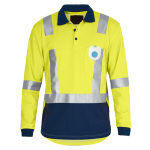 I’ve written before about attempts to make life safer for industrial workers via the use of wearable technology. One of the more interesting technologies to enter construction in recent times is the wearable device developed by SmartSite to help improve safety levels on site.
I’ve written before about attempts to make life safer for industrial workers via the use of wearable technology. One of the more interesting technologies to enter construction in recent times is the wearable device developed by SmartSite to help improve safety levels on site.
The company, which is part of the Y Combinator stable, offers hardware that is connected to the cloud to help companies measure what hazardous substances employees are exposed to.
Such exposure is common on building sites, and can lead to conditions such as cancer, dermatitis and a range of respiratory problems. To help reduce this, the SmartSite system monitors particulates in the air, UV rays, and even noise levels on site.
Working in a similar way is a smartwatch developed by industrial conglomerate Tata via their Group Technology and Innovation office. They developed a watch for workers at Tata Steel, Tata Elxsi and Tata Consultancy Services to measure their movement, heart beat, falls, ambient gases and temperature.
The company had a clear ambition to enter the wearables market, but the consumer space was incredibly crowded, whereas the market for industrial wearables was more accessible. What’s more, Tata have a wide range of industrial workplaces that were invaluable in developing and subsequently rolling out the device.
The first test bed for the product was in Tata Steel where it was used not only to provide safety monitoring for the employees but also supporting their work and providing various administrative functions.
Preventing back injury
The latest technology in this growing field comes from Australian startup Soter Analytics, whose SoterSpine wearable device not only tracks the movement of each worker, but makes recommendations to protect them from back injury. Early trials of the technology have managed to reduce back injuries by up to 70%.
The device is designed to clip into clothing and be worn throughout the work day. It works regardless of conditions and will alert the wearer if they’re at risk of injury. It comes with machine learning built into it to learn the movements of the wearer and provide personalized recommendations to the individual, with aggregated analytics for the business.
Suffice to say, the device is at a very early stage of its development, so it’s not clear how, or indeed whether, it can scale up, but it’s a sign of the kind of insights that are being built into clothing to help keep workers safe in even the most dangerous environments.